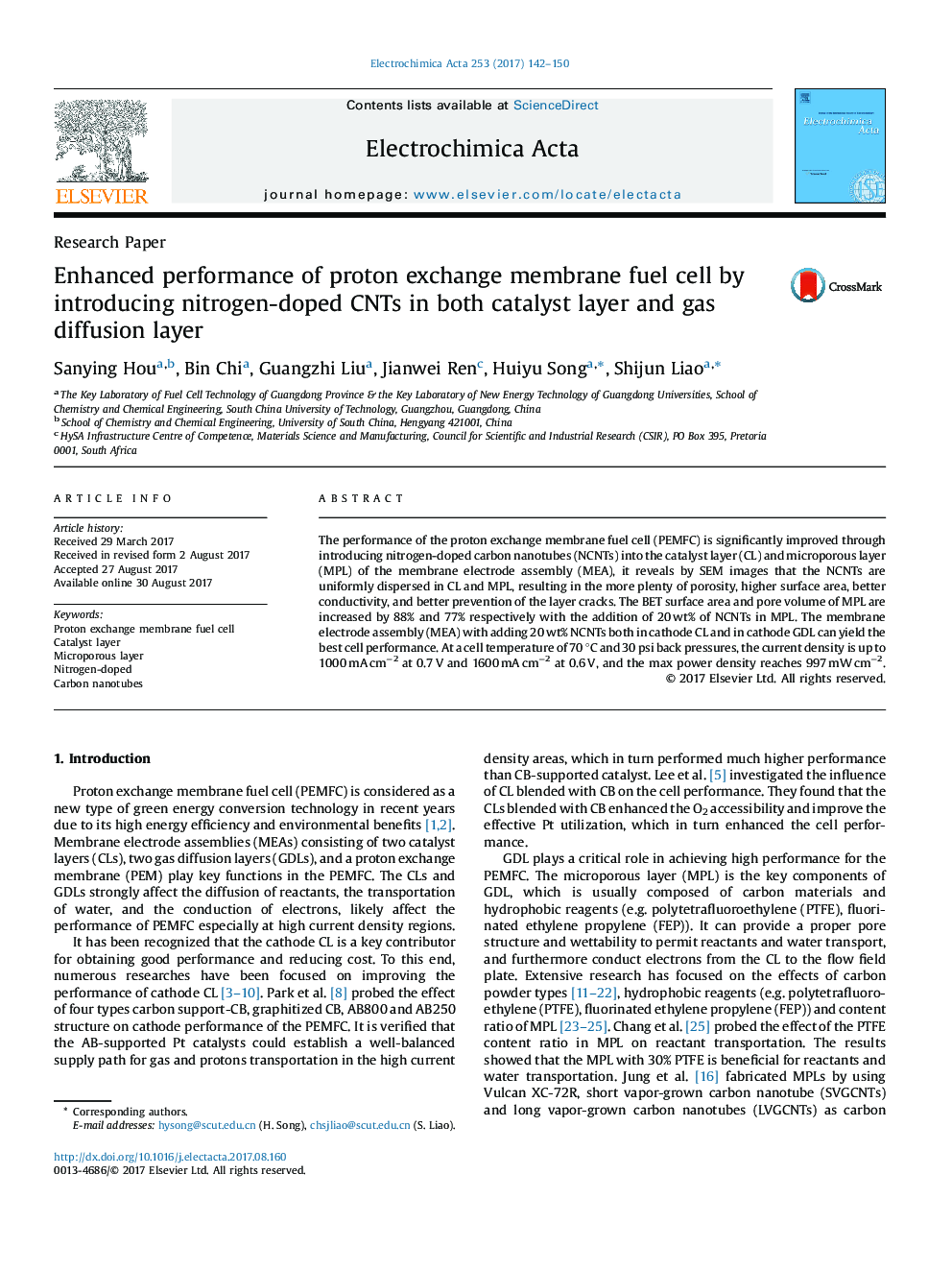| Article ID | Journal | Published Year | Pages | File Type |
|---|---|---|---|---|
| 6470063 | Electrochimica Acta | 2017 | 9 Pages |
â¢The performance of MEA can be enhanced by introducing N doped CNTs in CL and GDL.â¢The MEA with NCNTs in both CL and GDL simultaneously achieves best enhancements.â¢The current density at 0.7 V and 0.6 V is enhanced by 67 and 33% by adding NCNTs.â¢The max power density of our optimal MEA reaches 997 mW cmâ2, enhanced by 28%.
The performance of the proton exchange membrane fuel cell (PEMFC) is significantly improved through introducing nitrogen-doped carbon nanotubes (NCNTs) into the catalyst layer (CL) and microporous layer (MPL) of the membrane electrode assembly (MEA), it reveals by SEM images that the NCNTs are uniformly dispersed in CL and MPL, resulting in the more plenty of porosity, higher surface area, better conductivity, and better prevention of the layer cracks. The BET surface area and pore volume of MPL are increased by 88% and 77% respectively with the addition of 20 wt% of NCNTs in MPL. The membrane electrode assembly (MEA) with adding 20 wt% NCNTs both in cathode CL and in cathode GDL can yield the best cell performance. At a cell temperature of 70 °C and 30 psi back pressures, the current density is up to 1000 mA cmâ2 at 0.7 V and 1600 mA cmâ2 at 0.6 V, and the max power density reaches 997 mW cmâ2.
Graphical abstractThe MEA prepared by introducing nitrogen-doped CNTs (NCNTs) both in cathode CL and in cathode GDL exhibits excellent performance at cell temperature of 70 °C and 100% RH, the current density can be up to 1000 mA cmâ2 at 0.7 V and 1600 mA cmâ2 at 0.6 V, respectively, and the maximum power density reaches 997 mW cmâ2, which is much higher than that of the MEA without NCNTs addition (781 mW cmâ2).Download high-res image (210KB)Download full-size image
